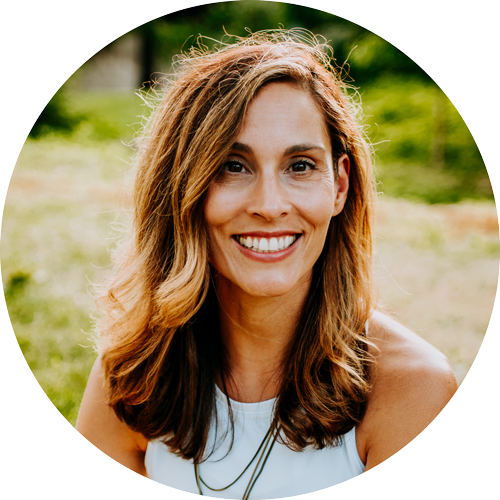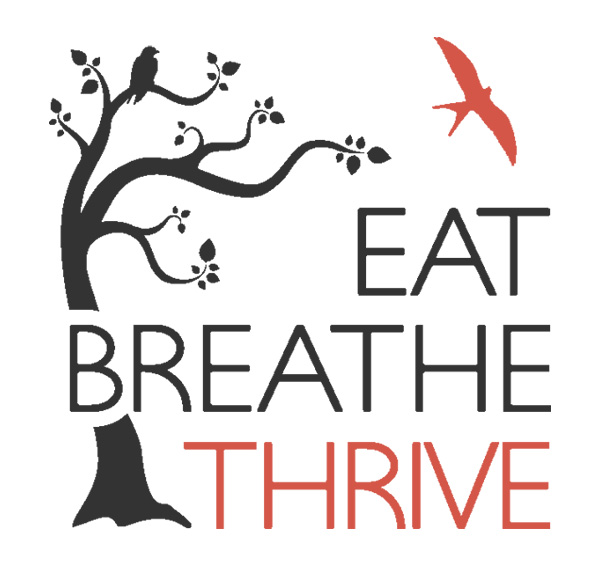Becoming an EBT Facilitator: My Origin Story
For me, a positive outcome of this pandemic is becoming more engaged with Eat Breathe Thrive. Until 2021, Eat Breathe Thrive was an organization I only knew about through Yoga Alliance. In my second year post Yoga Teacher Training, I participated in a free virtual course on yoga and eating disorders, jointly hosted by Eat Breathe Thrive and Yoga Alliance. The content was intriguing to me — I had recently fallen in love with teaching yoga, and as a teenager, I was wracked by anorexia. Having come out the other side—or so I thought—I wanted to learn how my teaching could support others in their own recovery.
The result? The person I ended up helping the most was myself.
Let me back up. A recovery journey necessitates an origin story. This is mine — uniquely mine, but ubiquitous. Unfortunately, my onset of puberty directly intersected with my mom divorcing my dad and taking my sister and me to live with her in a new neighborhood, my brother chose to stay put. It was the late 1980’s and I was just another latchkey kid coming home from school and eating easy-access junk food and watching soap operas until my Mom got home from work. Meanwhile, my body was raging with hormones and changing in ways I could not understand. When anyone would comment about my weight gain, my Mom would just tousle my hair and say, “Don’t worry babe, it’s just baby fat.” I was 13. In my heart, I knew this wasn’t quite the case, but her assurance became my rationale to not address the real issues. What I now recognize is that I was trying to fill a void created by the loss of what I understood to be a “traditional family.” I was using food to create an anchor to the only thing I believed I could count on, myself. But it was never enough to feel “full,” and I entered high school overweight and unmoored.
I didn’t have much of a relationship with my dad, because our relationship was built on a schedule of “every other weekend and every other holiday.” My mom struggled to make ends meet. By the time I had entered 10th grade, we had already downsized to a smaller duplex and traded in our sedan for a more affordable yellow Ford Pinto. My older sister was out of the house in college. It was me and my mom against the world, until one day it was just me. I came home from school and found my aunt at the door of our apartment. She told me she had just taken my mom to the airport, and I had to move in with my dad. On the surface, I knew the move was for the best, but deep down I felt unlovable, unwanted, and unworthy.
I resorted to getting “healthy” in order to control something — anything. Getting “healthy” looked like severely restricting my daily caloric intake, painstakingly measuring ingredients, and joining the track team – not because I loved running, but to burn calories. I received positive social reinforcement for my weight loss, so I was feeling pretty good about myself. I didn’t think it was necessary to tell anyone that I hadn’t menstruated in over two years, was constantly cold, or that I was losing hair and bruising easily. I was never officially diagnosed — as I refused to admit these symptoms to a doctor — but I now acknowledge I was struggling with anorexia.
Fast forward to college. Still thin and convinced I was at the height of discipline and health, I enrolled in a nutrition seminar. I attended a large university and was one of 250 students in the class. One of our assignments was to complete a food diary. I turned mine in proudly, pleased that I could keep my intake to so few calories. When the teaching assistant handed the notebook back to me, there was a personalized note from the professor: “If this is truly all you are eating, you have a problem, and you need to see me right away.” I was mortified.
Thankfully, my desire to “people please” outweighed my concept of healthy eating, and for the first time, I began to think deeply about how I was treating myself. I was lucky to have many different positive influences in my life. College had expanded my circle of friends and inspired my inclination to community service. I worked at a local shoe store to contribute to my tuition, participated in a sorority, and was in a loving, romantic relationship. These formative years expanded my horizons and allowed me to see that I am more than the number on the scale or the size of my waistline. I realized my ideas, my work ethic, and my contributions to the world were valued and meaningful. By the time I graduated from college, I was taking the first steps towards recovery.
My post-graduate life included a cross country move, satisfying corporate jobs, new and fulfilling friendships, and marrying my college sweetheart. It wasn’t all sunshine and rainbows, but it was good and food became something I thought less and less about. Starting our family became a priority, and for the first time, I was open with my healthcare providers about my disordered eating. For the very first time in my life, I realized that how I treated myself had an impact on those around me. Getting pregnant wasn’t easy, and I struggled with feeling that my eating disorder was the root cause of our challenges. No physician made me feel that way—it was a burden I carried alone. When I finally got pregnant, I was so grateful for my body's capacity to not only heal but to grow and support another being. Pregnancy and becoming a mother was a touchpoint in my recovery; it showed me how resilient my body could be and I shifted from being critical of my body’s outward appearance to awe of its capacity to support life - mine and my child’s.
After my fourth child started preschool, I discovered yoga. I found it to be an amazing physical practice with tremendous mental health benefits. I felt calm, at ease, and strong. When my local studio offered teacher training, I was so excited to sign up and learn more. The commitment included several hot yoga practices on our teacher training weekends, and we were encouraged to participate in the studio’s version of a “mindful eating” experience, which recommended restricting certain types of food and drinks combined with frequent studio practices throughout the offering. For me, this yoga teacher training "approach" was the onramp to a relapse.
I immersed myself in the “yogic” lifestyle, but I didn’t realize I was also falling back into past anorexic behaviors. Everyone around me seemed to celebrate thinness and “sweating it out.” I was only tuning in to self-deprecating commentary on weight, eager to hear about someone’s “success” on a juice cleanse, and appreciating all of the encouragement for how hard or how often someone practiced. In the studio, I looked forward to being greeted with: “Oh, you look great! Have you lost weight?” and “Those pants/that shirt looks amazing on you!” Yes, it’s lovely to be recognized and admired, but when compliments are based on looks and labels it’s hard to know what’s actually likable – you or your outward appearance.
As a young person, I’d believed my sense of worth and value was tied to being thin. Now, as a yoga teacher, I feared that if I didn’t “look” or “eat” just right I wouldn’t be valuable as a person, let alone a respectable and worthy yoga teacher. All too easily, I reverted to old eating disorder behaviors – monitoring my food intake, chewing and spitting out my food, obsessing over food labels and calorie counts, limiting my sweets, overexercising, and judging other people's consumption. Yoga provided a convenient mask to hide my disorder behind the guise of something “healthy.”
My moment of self-awareness came when I participated in that free course on yoga and eating disorders. I realized that yoga can be a double-edged sword when it comes to my eating disorder. While the practice of asana has real benefits for physical, energetic, and emotional health, the particular culture I was immersed in felt focused on practicing more, sweating more, and eating less. I couldn’t see that the culture and the practice could be separated until someone outside of my immediate circle pointed it out. Hearing this concept shared in the Eat Breathe Thrive course was illuminating. I realized that I must not be the only person who’s experienced this same dilemma: a love for the practice, but a realization that how, where, and with whom you practice also impacts your experience of yoga. I recognized that I needed to adjust my definition of yoga and the types of yoga that nourished me.
“I recognized that I needed to adjust my definition of yoga and the types of yoga that nourished me.”
The pandemic shook up the yoga world as we knew it, and I started building an at-home practice. I stopped taking classes that emphasized burning calories, sweating it out, or the latest diet. In my own classes, I reframed my language and took care to build a space where all felt welcome, cared for, and fulfilled. In many ways, my teaching has become the practice I needed. About halfway through our lockdown, I saw Eat Breathe Thrive’s post a call for volunteers. I took it as a sign from the universe that it was time for me to give back to an organization that had helped me change my perspective, my teaching, and my practice in meaningful ways.
There are three key takeaways that I have learned on my recovery journey so far: 1) I need a guide; when I was 19 it was my professor and when I was 45 it was Chelsea Roff 2) I need community; I have learned to lean in to support while also taking responsibility for my own wellbeing and 3) I need to serve; seeing an opportunity to give back to Eat Breathe Thrive created a sense of meaningful connection and contribution to an organization that had inspired me to heal. To now have the opportunity to bring the Eat Breathe Thrive curriculum to my local community seems like an unimaginable, yet awesome, evolution of my recovery story.
About The Author

Daneen Farrall received her 200-hour certification in May 2014, and began teaching athletes at local CrossFit gyms and serving the community through St. John Westshore Hospital in the western suburbs of Cleveland. She also began consistently teaching 5-7 studio classes per week, crafting workshops, special classes and continued her work with athletes from high school through professional levels. During the Pandemic Pause, Daneen started crafting content and experiences on he own, including developing CE curriculum that can be scaled for various learning settings and teaching styles. She is inspired to work with teachers, studios, and students of any level of experience and interest. She is passionate about yoga as a tool for use in recovery from eating disorders and recently added being an Eat Breathe Thrive facilitator to her roster of offerings.
Click here to find out about Daneen’s upcoming Eat Breathe Thrive events.


